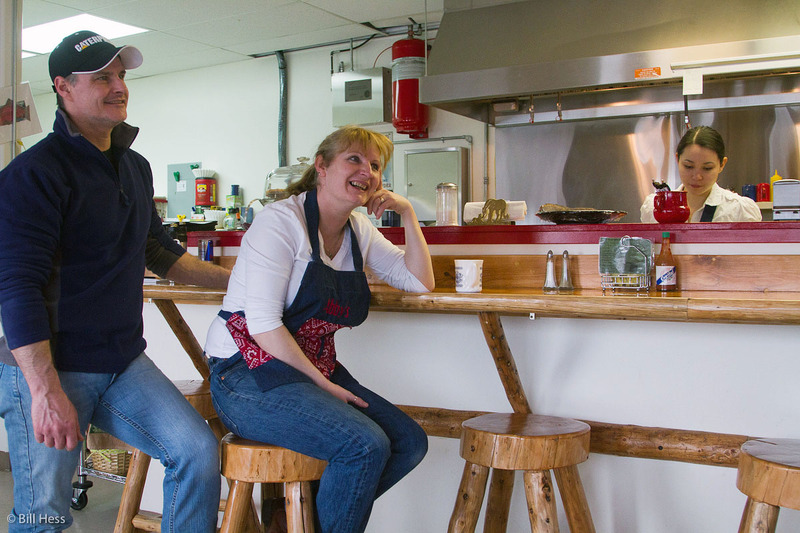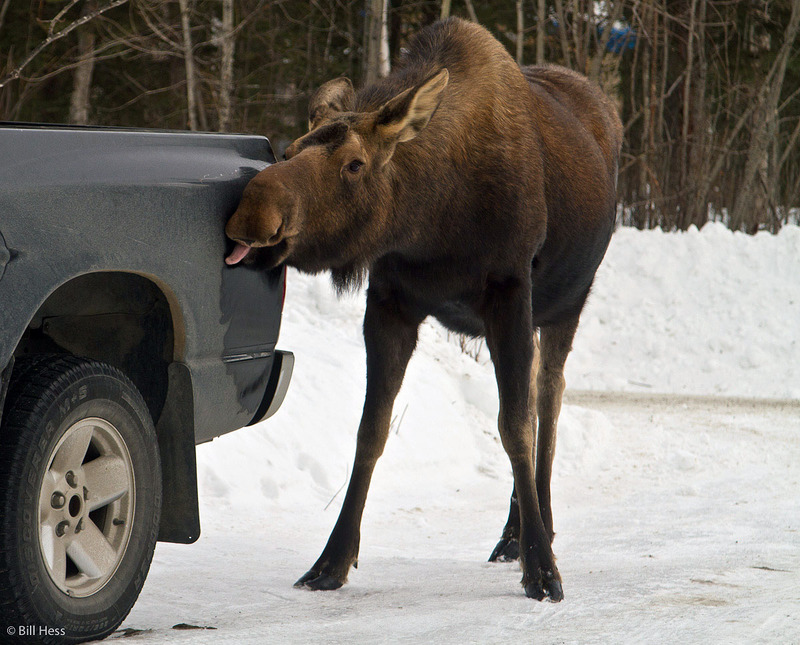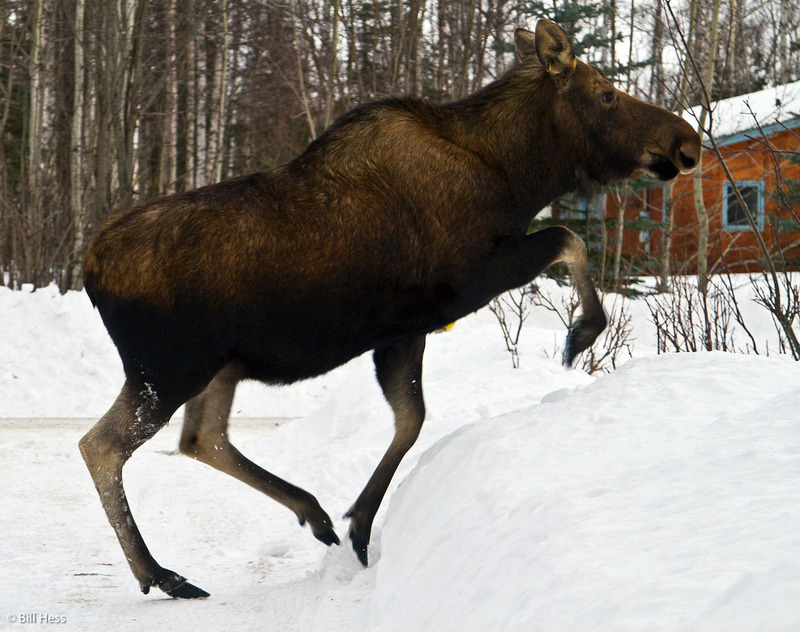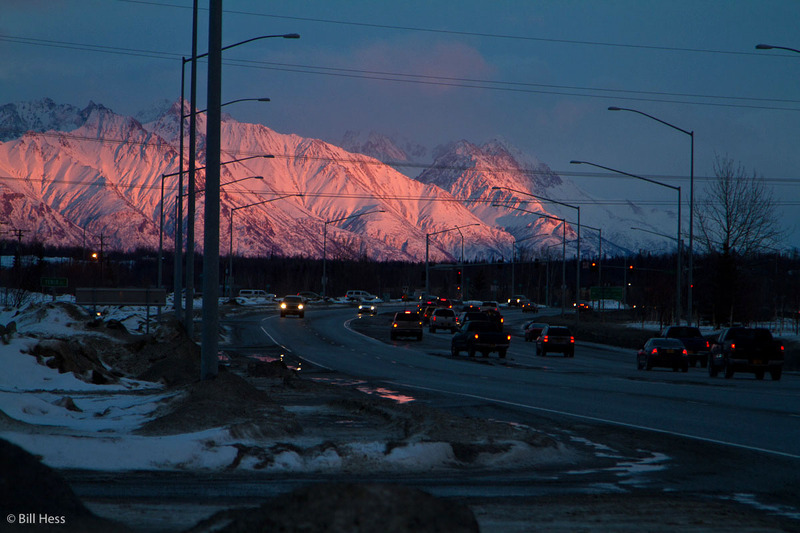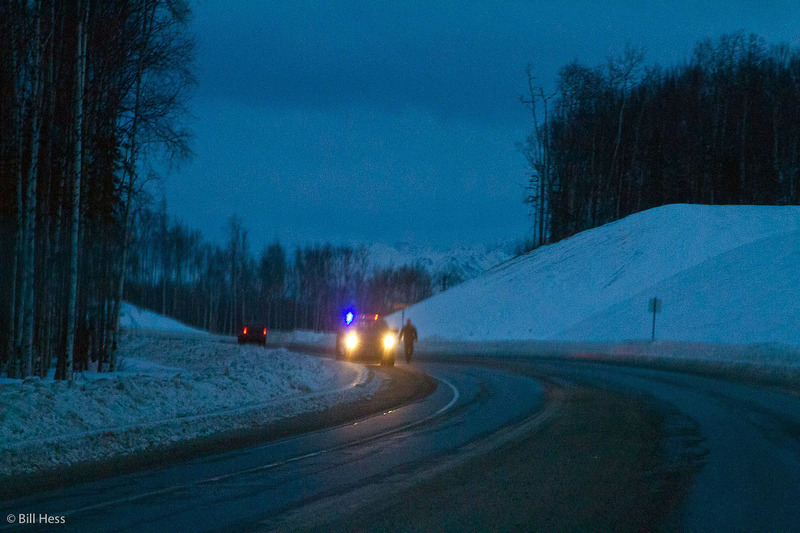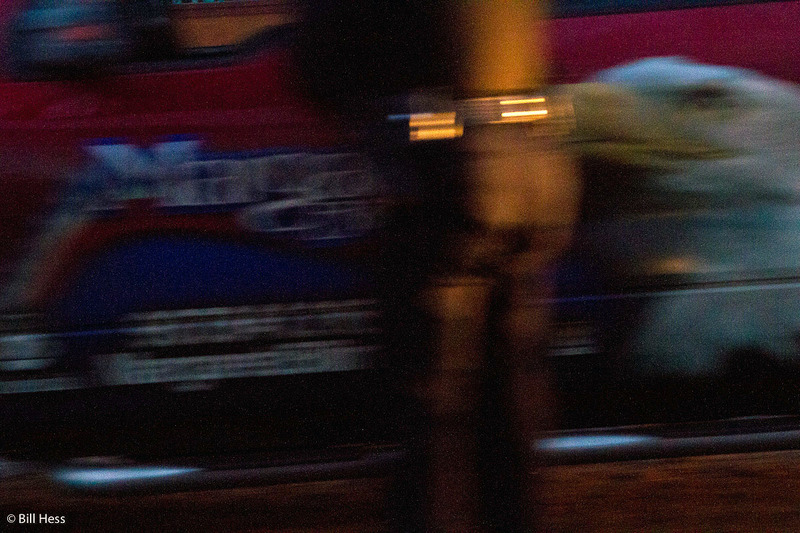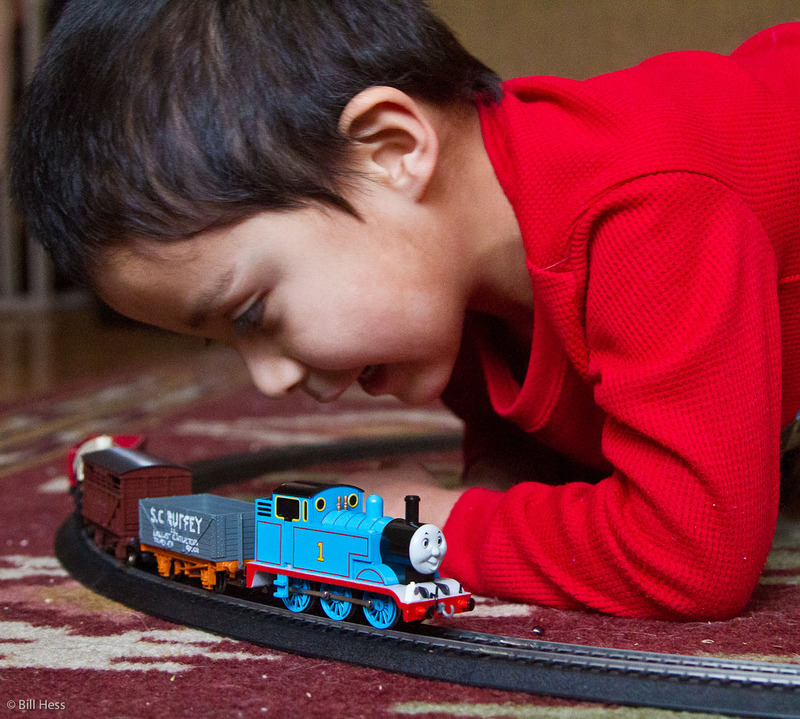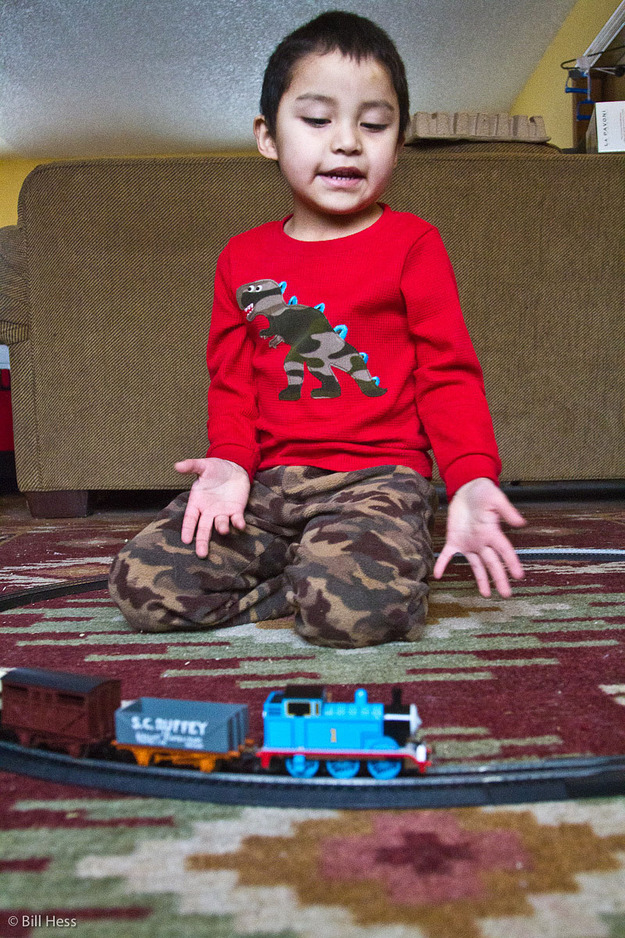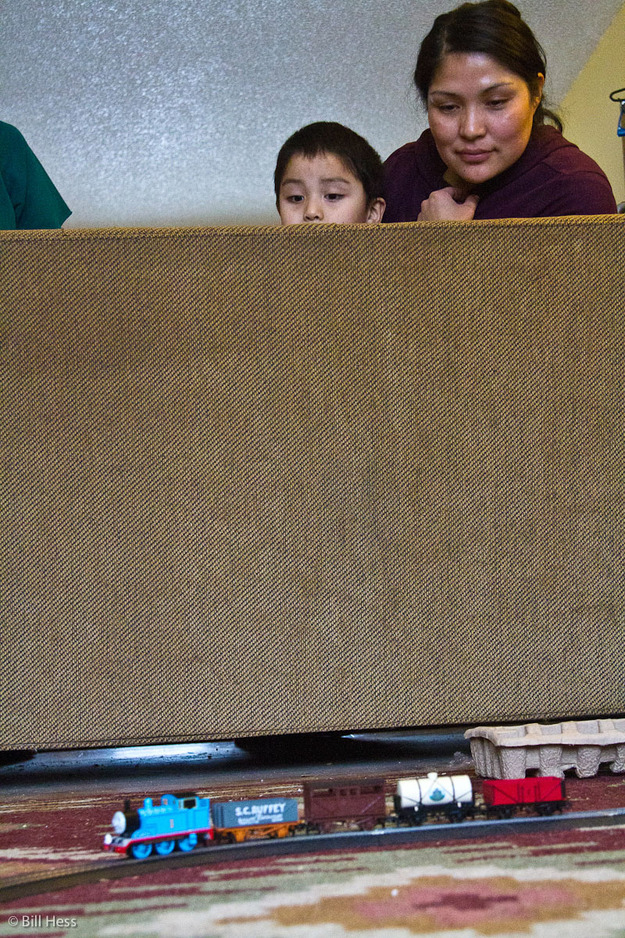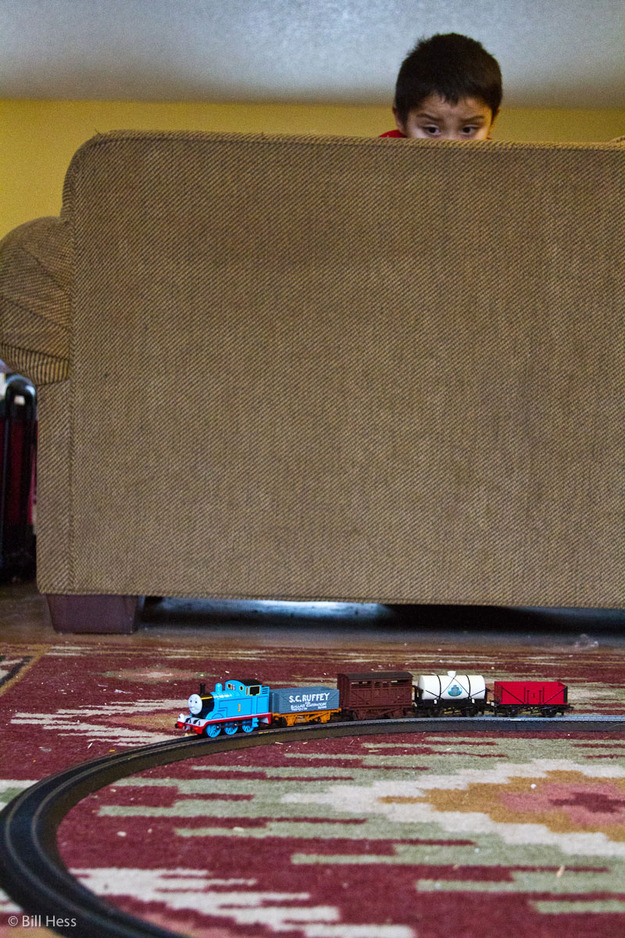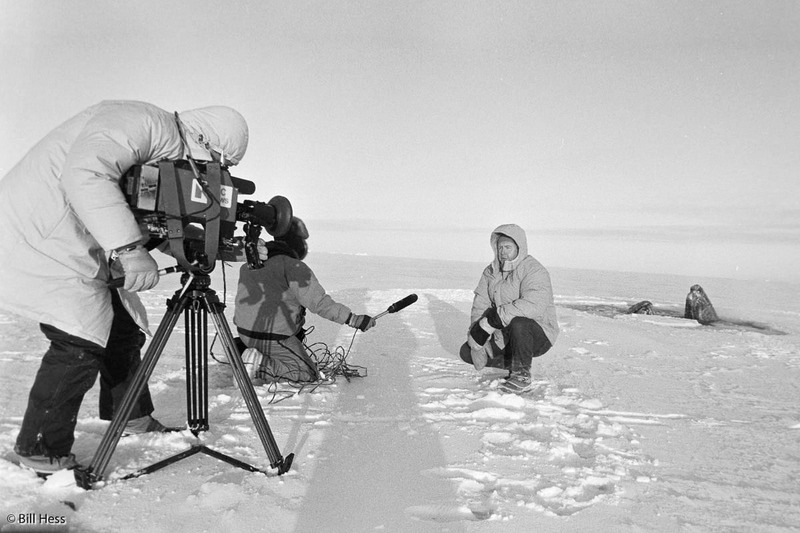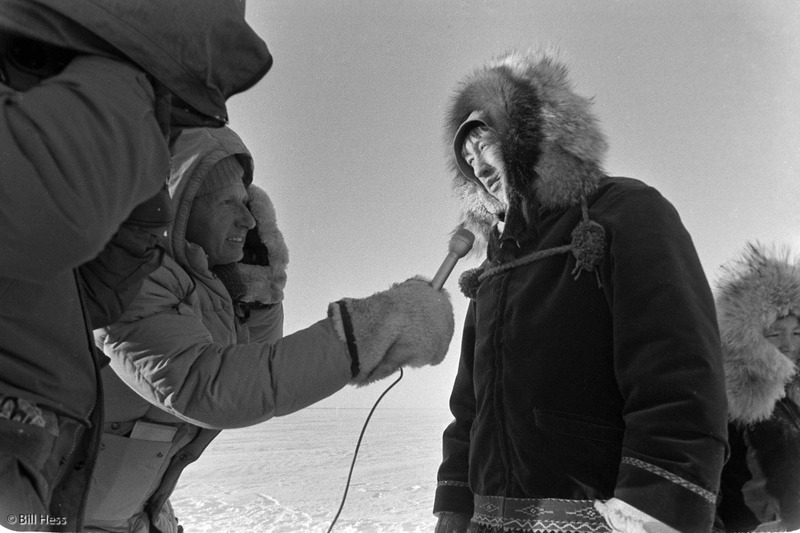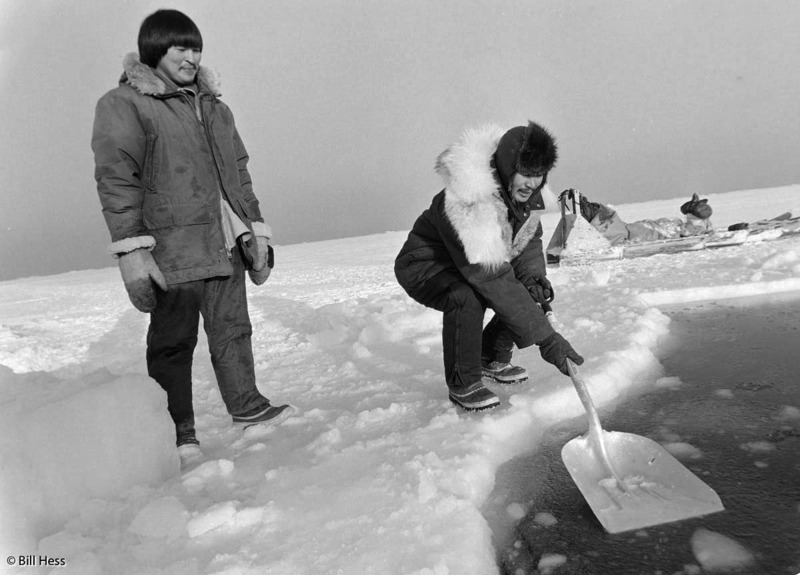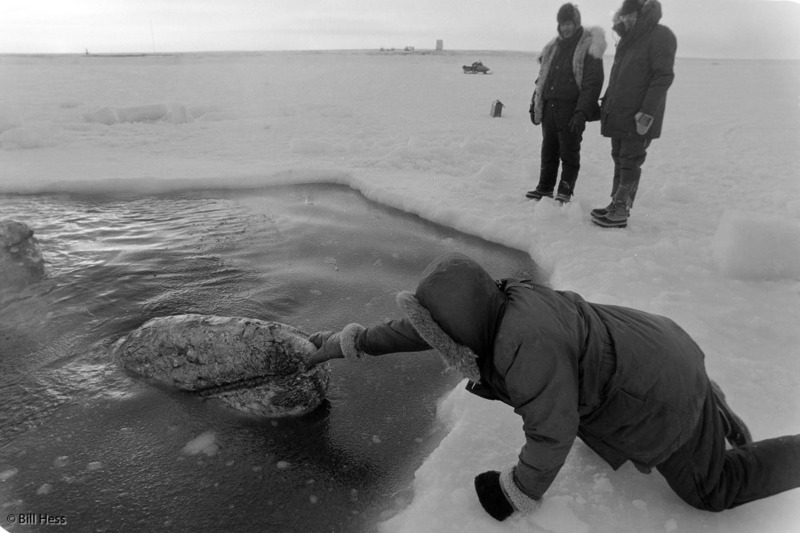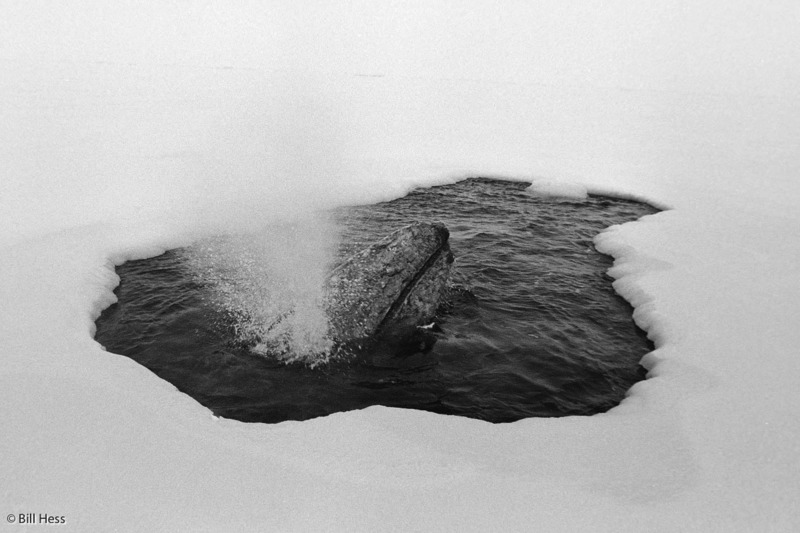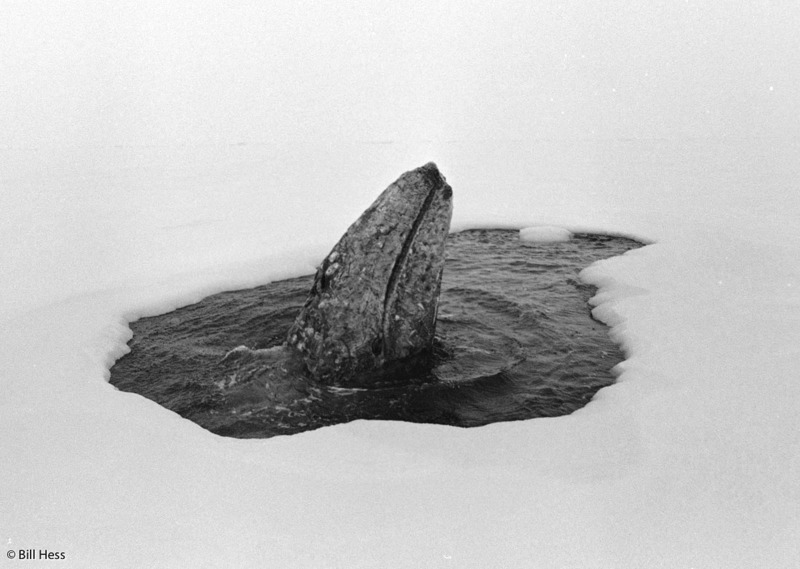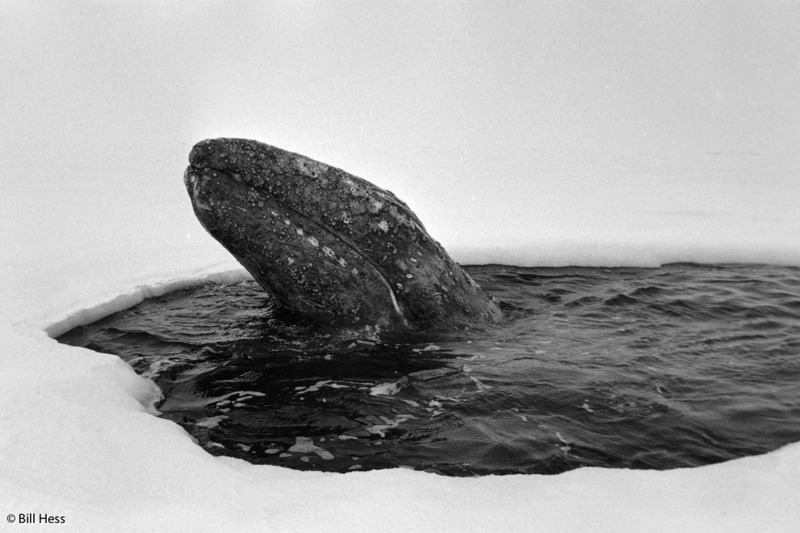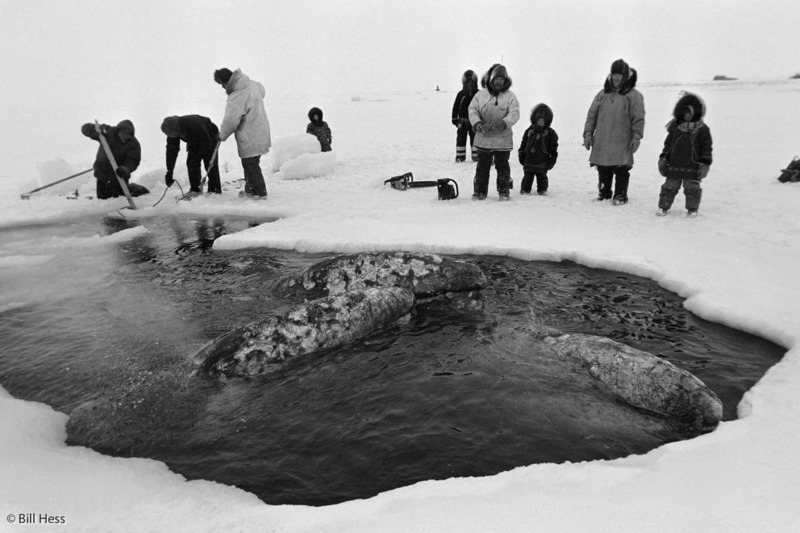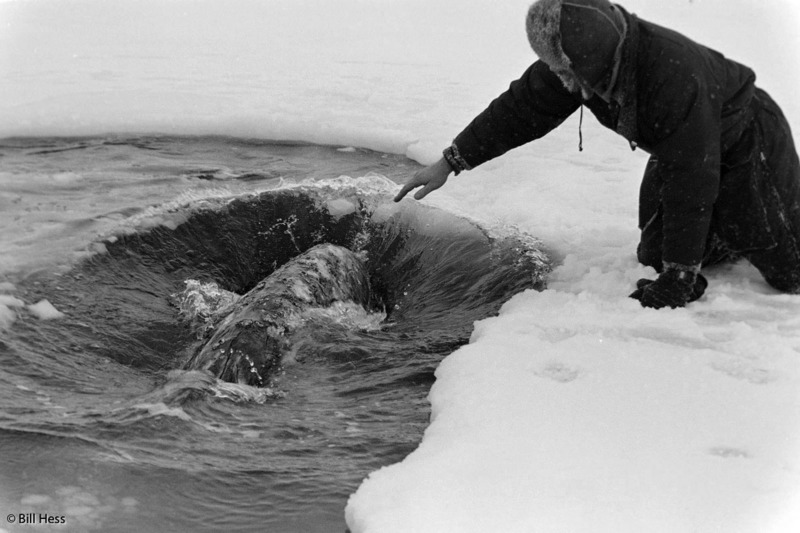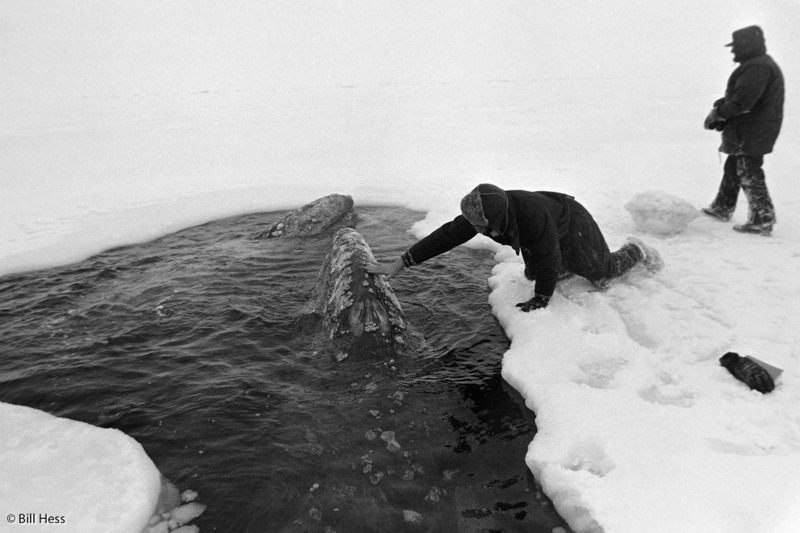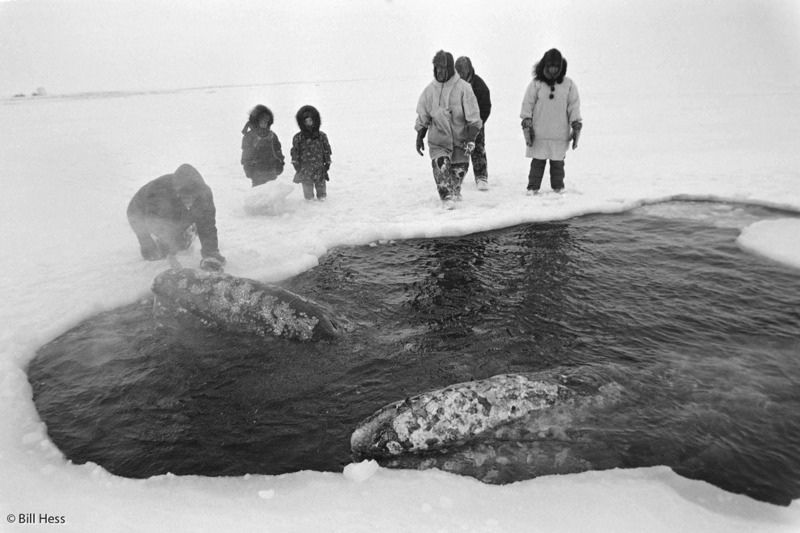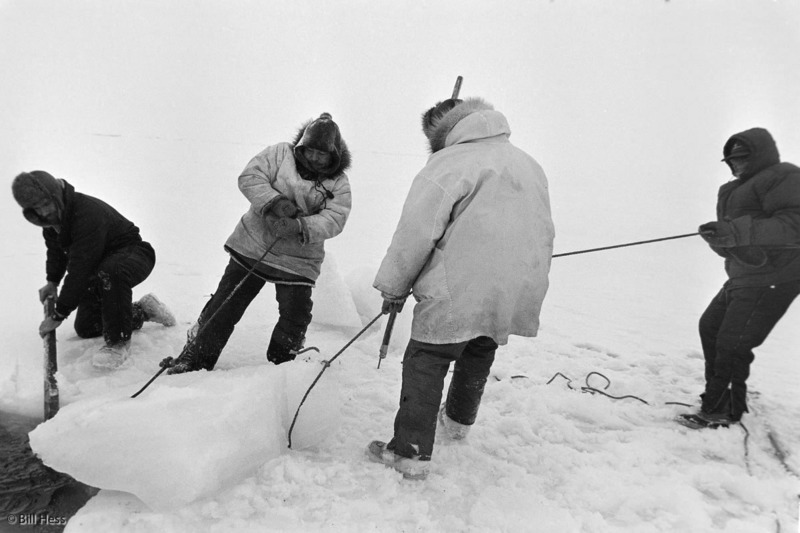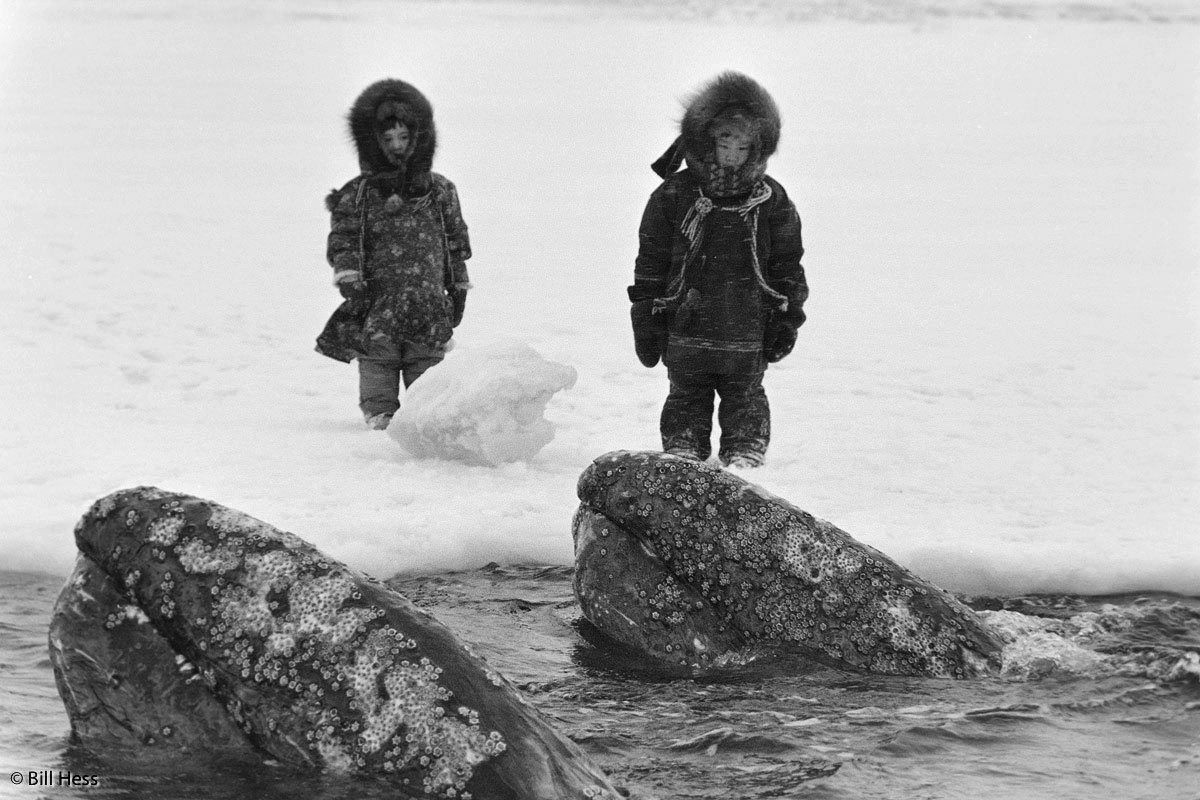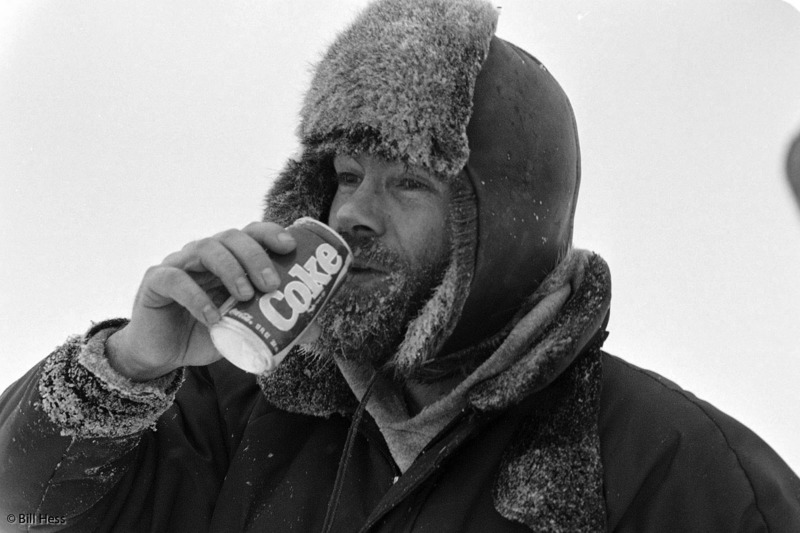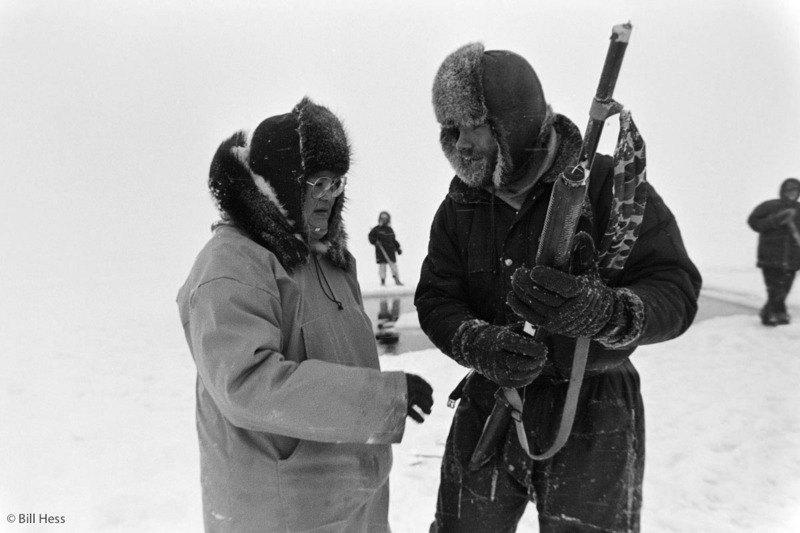
With a significant amount of hard work by a small band of Iñupiat whale hunters, a couple of NSB wildlife biologists and a NOAA official, the three trapped gray whales ended the day with bigger pools, cleared of slush and debris, to breathe in. This would prove to be a very temporary situation. They were set at least for the night - and this would be the night that whaling captains, biologists and a NOAA official would meet to discuss the options - rescue or euthanize.
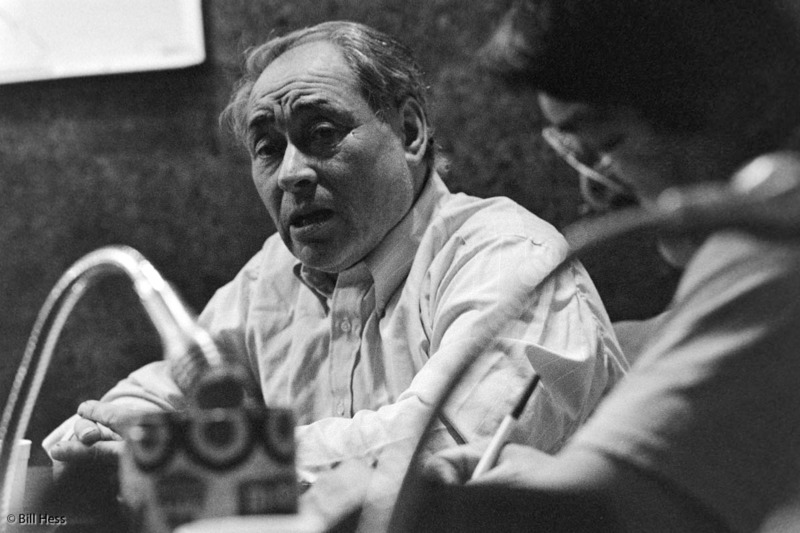
In the evening, Arnold Brower Sr. called the Barrow Whaling Captains together and the meeting to order. Don Oliver and his NBC crew waited in the hall, to see if they might be granted permission to enter. Some of the whalers wanted to keep them out, but Arnold Sr. disagreed. He had been a whale hunter all his life and had also spent much of his youth herding and following reindeer across the tundra.
He had served as an Army Paratrooper in the Pacific in World War II and had then been recruited by the Navy who needed his expertise on the land as they set out to establish the National Petroleum Reserve, Alaska. Arnold Sr. had been active in the lands claim movement that preceded the Alaska Native Claims Settlement Act of 1971 and afterward had become chairman of the Ukpeagvik Iñupiat Corporation - the ANCSA village corporation of Barrow.
Through all this, he had captained one of the most consistently successful whaling crews in Barrow and had been active in the fight to keep the traditional bowhead hunt alive after the International Whaling Commission and the US government had misguidedly tried to shut it down, based on faulty information, in 1977.
Arnold Brower Sr. knew the value of good PR. He knew media snubbed was dangerous media. Plus, he did not feel the whalers had anything to hide. He was proud of his way of life. It had sustained his Iñupiat ancestors for thousands of years. He wanted it to sustain his descendants for at least thousands more. His argument to let NBC cover the meeting prevailed. The captains invited them in.
Arnold led the discussion and there was was no talk of mercy killing - but only on what might be done to help the whales. Arnold spoke of the habits of different whales, how in conditions such as those that had trapped the gray whales, belugas would follow bowheads to safety, but gray whales would not.
He speculated about what might happen if the whalers were to cut a path to open water for the whales. Would the whales use it? Would they save themselves or just get themselves into trouble all over again? There was only one way to find out - for the hunters to give the whales a chance.
Ben Nageak, then director of the North Slope Borough Wildlife Management Department, sits to Brower's side.
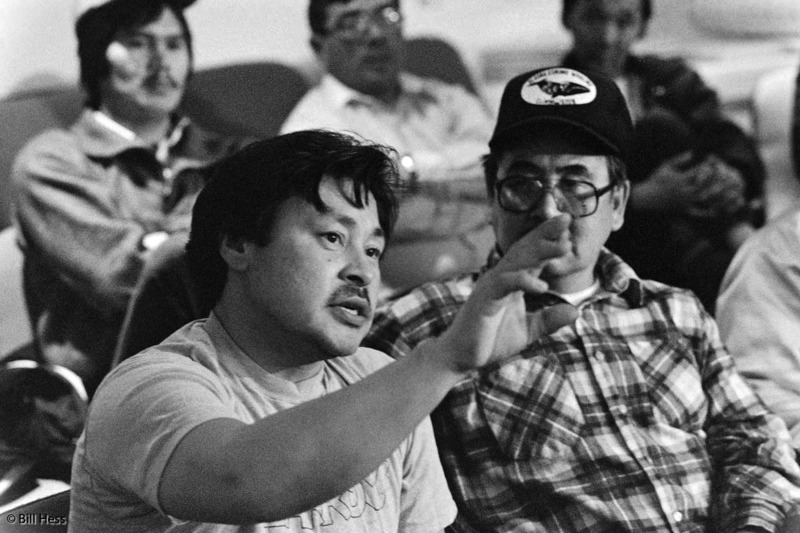
Arnold Brower Jr. gave his report to the meeting. Although the efforts of Geoff Carroll and Craig George to have the Coast Guard send in a ship with icebreaking capabilities had failed - due to the lack of any ice breaker in Alaska Arctic waters, to the east, the Alaska oil industry had also taken an interest in the whales.
VECO, then the major provider of oil field services at Prudhoe Bay, volunteered to send a giant hoverbarge to break open a path for the whales. Towed by a Sikorski Skycrane - a giant, elongated, helicopter designed to hoist huge loads - the hoverbarge rides on a cushion of forced air, breaking the ice beneath it. The Alaska National Guard had agreed to provide a Skyscrane.
Arnold Jr. was in favor of giving the barge a chance. Should it fail, he believed the whalers themselves could make a path to open water. Since the time he was a small boy, Arnold had been an active member of his father's crew, often times assuming charge when his father could not be out.
Arnold Jr. had helped when, using ropes, hooks, and holes cut into ice, hunters had dragged a whale caught by Luther Leavitt Sr. beneath a broad stretch of slush ice, new ice and old glacial ice until they reached stable, anchored ice strong enough to haul the whale up onto. He had once seen a whale pulled out from under ice 20 feet thick. "So the answer was already there in my mind, how we could do this," he later told me.
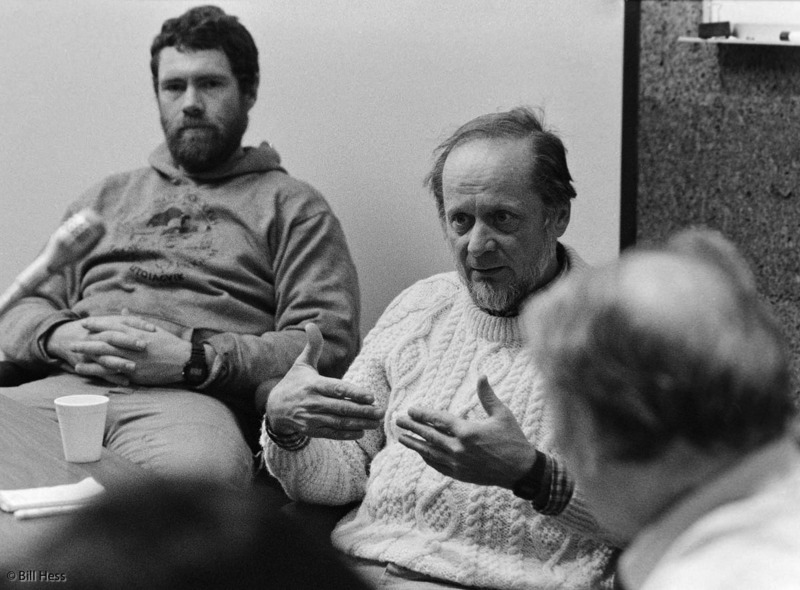
In the afternoon, after the group led by Arnold Jr. had finished enlarging and cleaning the two whale holes, one had commented that it was now time to get ready to go to the meeting and present their observations and thoughts to the whaling captains so that they could decide what to do.
Morris emphatically interrupted to stress it was not the decision of the Barrow Whaling Captains to make, but of the federal goverment. He was the arm of the federal government - the final decision would be his.
To me, the idea of putting a bureaucrat from the city in authority over Iñupiats on the ice in a matter that involved whales did not seem like a good one. Why couldn't the federal government have handled this similar to the way it handles the bowhead hunt? There, it claims ultimate authority but through a cooperative agreement with the Alaska Eskimo Whaling Commission, recognizes the knowledge, right and ability of Alaska Eskimo hunters to manage their hunt under guidelines reached in a cooperative agreement between the United States government, the International Whaling Commission and AEWC itself.
To me, it seemed a similar arrangement here would have made sense. The hunters had a depth of knowledge of the ocean, the ice, and the ways of whales that Morris never could have - and they had a close working relationship with and mutual respect for the biologists from NSB Wildlife Management. They were the only ones who would ever really know what was going on out on the ice.
Yet, in its wisdom, the federal government had asserted control and had made Morris the authority in charge. He had so far proven amiable, friendly and willing to listen, so perhaps it would work out all right.
At the end of the discussion, the Barrow Whaling Captains agreed - the whalers and the biologists would keep the breathing holes open long enough to give the hoverbarge time to clear a path to them.
Ron Morris also agreed - but set a deadline of Tuesday, three days hence, to complete that task. He did not state what he would do if that deadline were not met.
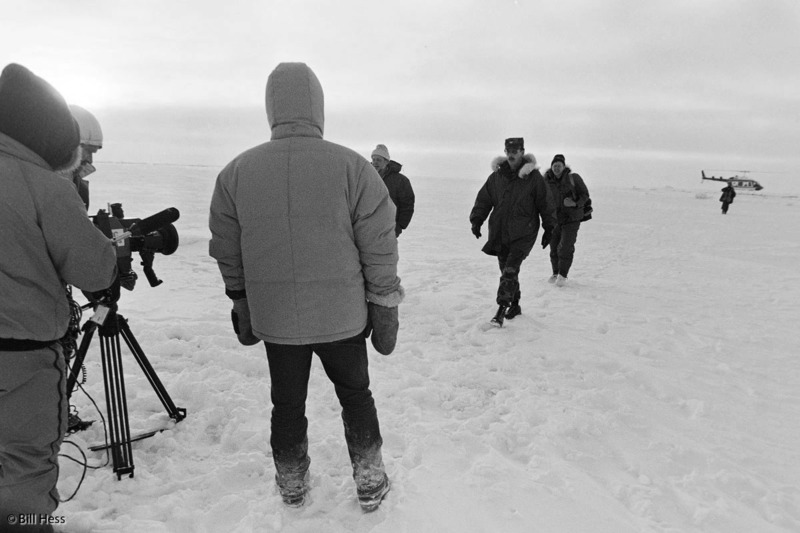
The next day dawned cold and kept growing colder - before the day ended, the temperature would settle in at -17 F. (-22 C). "You wouldn't believe the conversations I have with my superiors in Washington, DC." Morris told several of us as we shared a car ride to the North Slope Borough Search and Rescue Hangar, where we would catch a helicopter ride to the whale holes.
Ronald Reagan was serving his final months in office. The presidential election between George H. W. Bush and Michael Dukakis would take place in less than a month - yet interest in the presidential race was being eclipsed by the media attention being given to the whales.
"The President wants these whales saved," Morris told us. "Whatever it takes, he wants them out of the ice holes and set free. Ronald Reagan wants to go out of office as an environmentalist." Morris stressed that he was speaking confidentially for now and then told us a Soviet icebreaker was operatng about 350 miles to the north. High US officials had contacted high Soviet Union officals to see if the Soviets might send the icebreaker to help free the whales.
Above: Ron Morris and Alaska National Guard Colonel Tom Carroll walk toward the whale holes. I do not recall who the person behind them is.
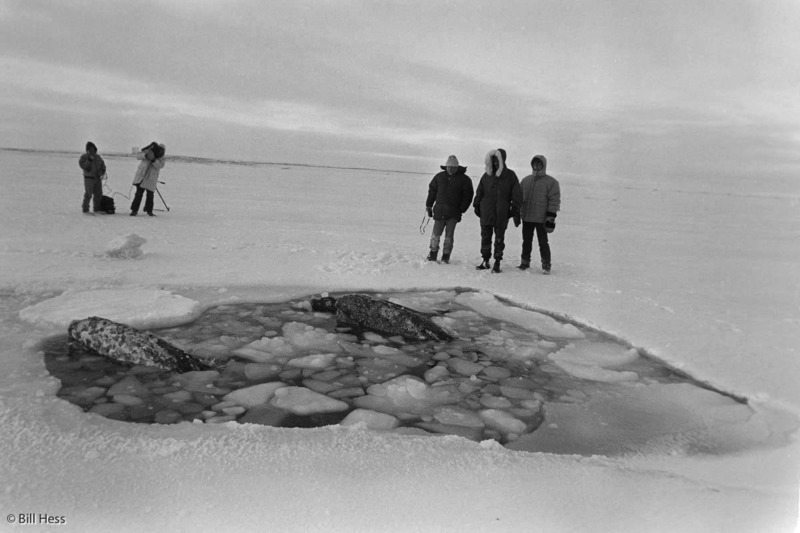
Morris, Colonel Carroll and NBC's Don Oliver observe the whales. The holes were rapidly shrinking and freezing over - but the whalers would soon clear them.
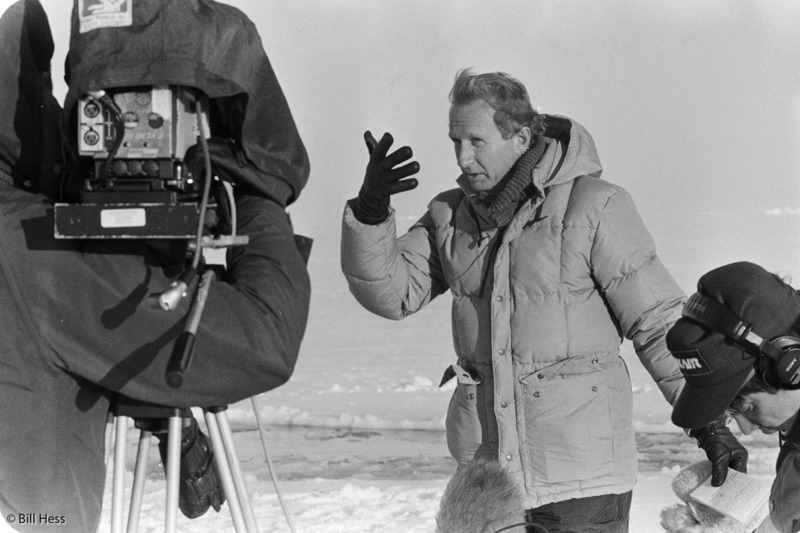
A couple of other TV crews had arrived and I had observed that before going on air, their correspondents would remove their hats. The instant they would go off air, they would hurriedly pull their hats over their heads again, muttering and complaining, worried that they might be about to lose an ear to frostbite.
NBC's Don Oliver now did the same. Here he is - camera rolling.
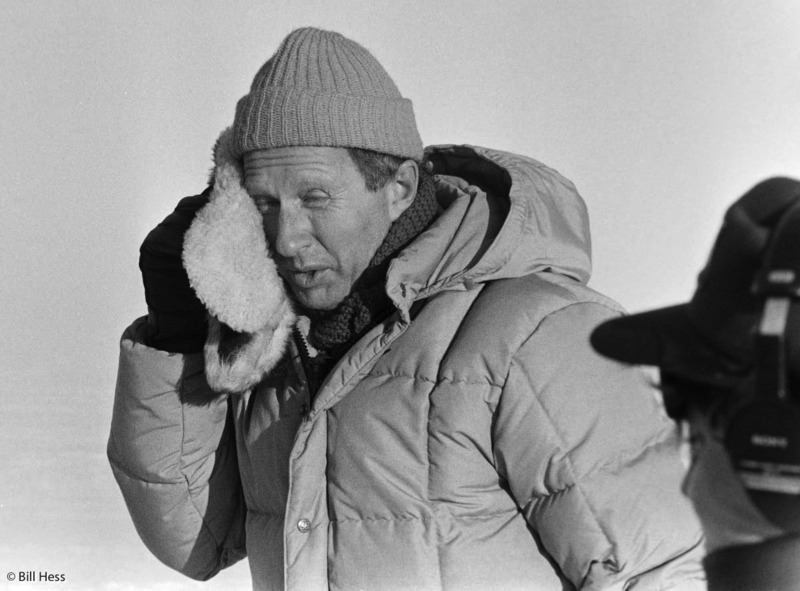
Here he is, moments after going off-camera.
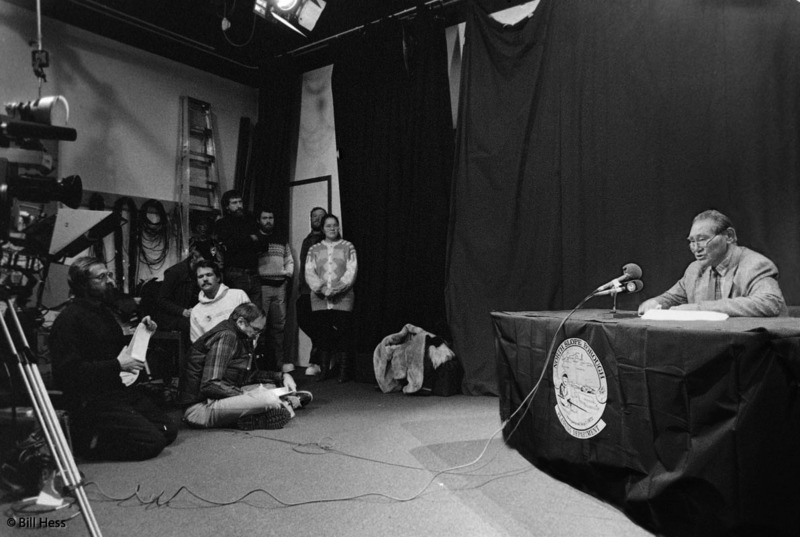
Through the NSB TV studio, the North Slope Borough also aired its own informational program, under the direction of Marie Carroll, center. North Slope Borough Planning Director Warren Matumeak was serving as Acting Mayor and so explained what was happening and spoke about the Borough's role in supporting the rescue effort. Biologists Carroll and George also took their turn in front of the camera.
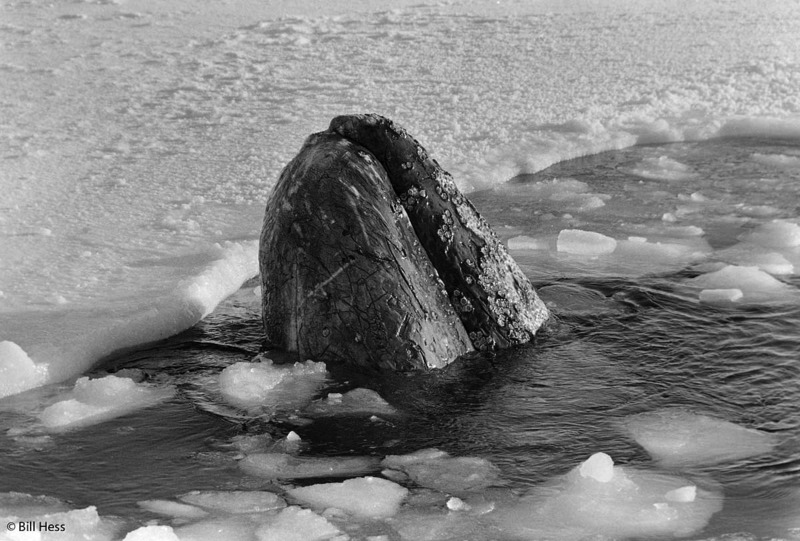
This is Crossbeak, the largest of the three, so named for the odd way the top and bottom of its mouth come together. The next largest was Bonnet. In my last post, I mentioned how the small whale that had inches of nose bone exposed had been given the nickname, "Bone."
Their Iñupiaq names were Siku, Poutu and Kannick.
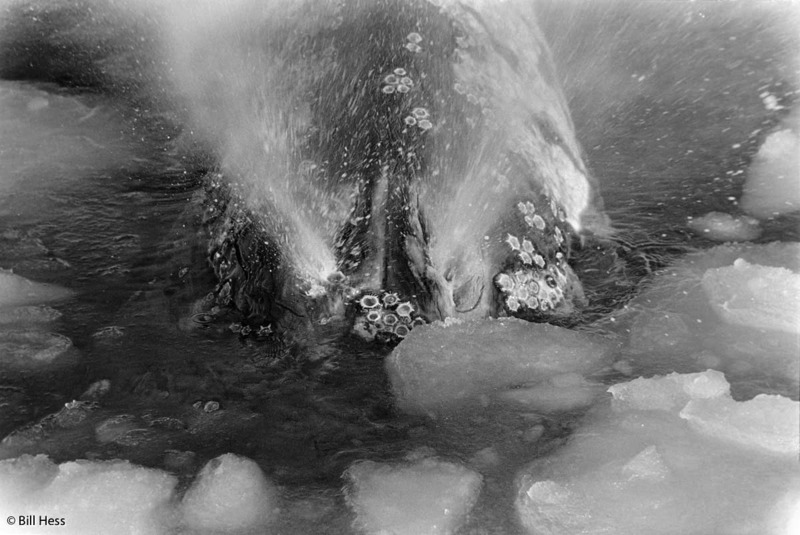
This is Bonnet. Bonnet's name came from the formation of barnacles seen between the blow holes, at the back.
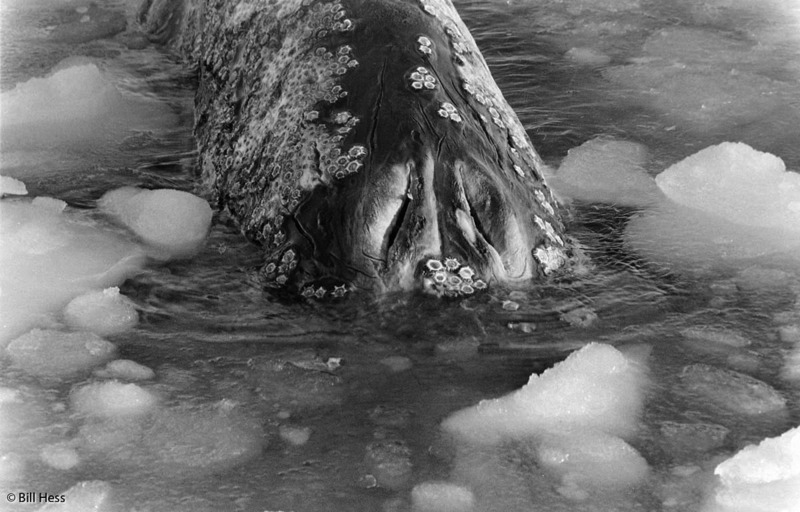
Bonnet, ready to take a breath.
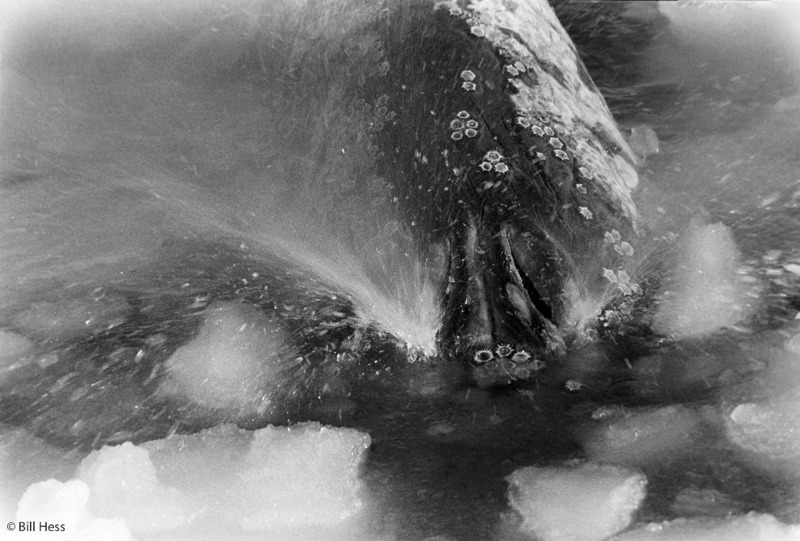
Please note the litte chunks of ice immediately freeze in Bonnet's exhalation.
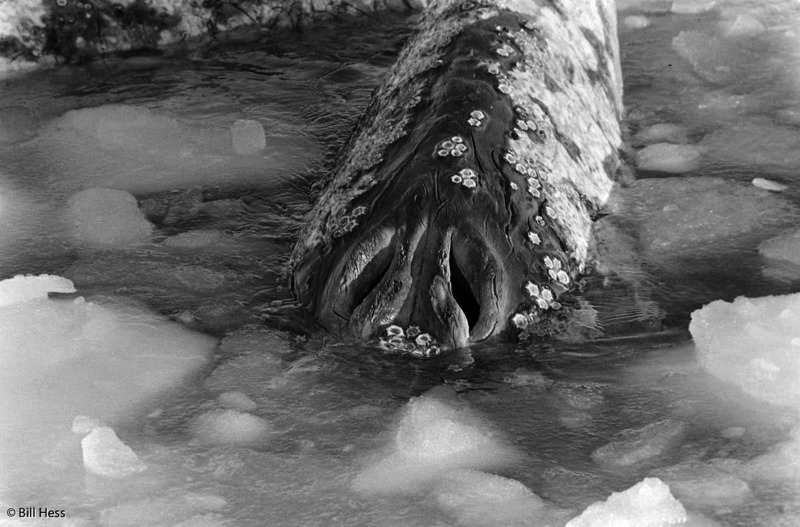
Bonnet - breathing. Every sentient individual in the world can relate to the need to breathe, and to the horror at the prospect of having breath cut off. Perhaps this helps to explain why, when the people of the world saw these whales struggling to keep their access to breath open, there was such an outpouring of concern, sympathy - and most of all:
Empathy.
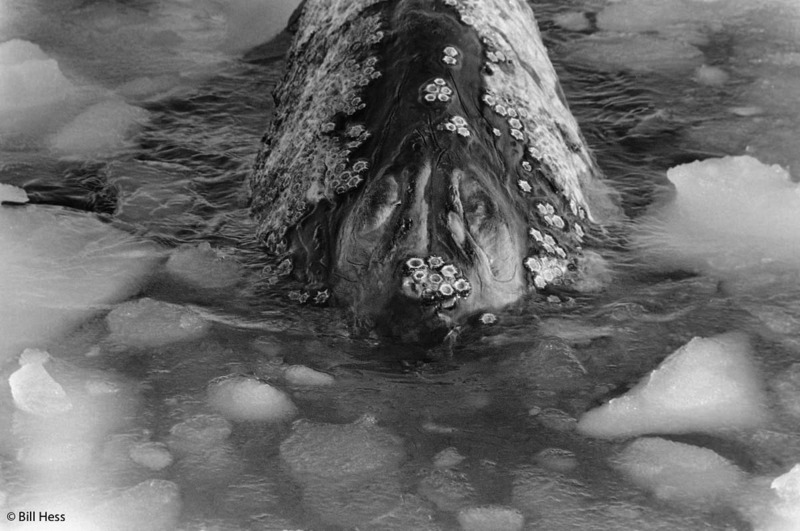
Among those moved by the struggle of the whales to breathe were two men in Minnesota. Rick Skluzacek's father had invented a deicer and had formed a company called Kasco Marine to market it. The deicer was used primarily to keep boats docked in Minnesota Lakes ice free. Skluzacek got a call from his brother-in-law, Greg Ferrian, who suggested they volunteer to take their deicers to Barrow so the rescuers could use them to keep the whale holes open.
They first contacted Ron Morris, but he dismissed them as kooks and would have nothing to do with them. So they headed to Barrow at their own expense. Once they arrived, Morris dismissed them again. He did not want to be bothered by them.
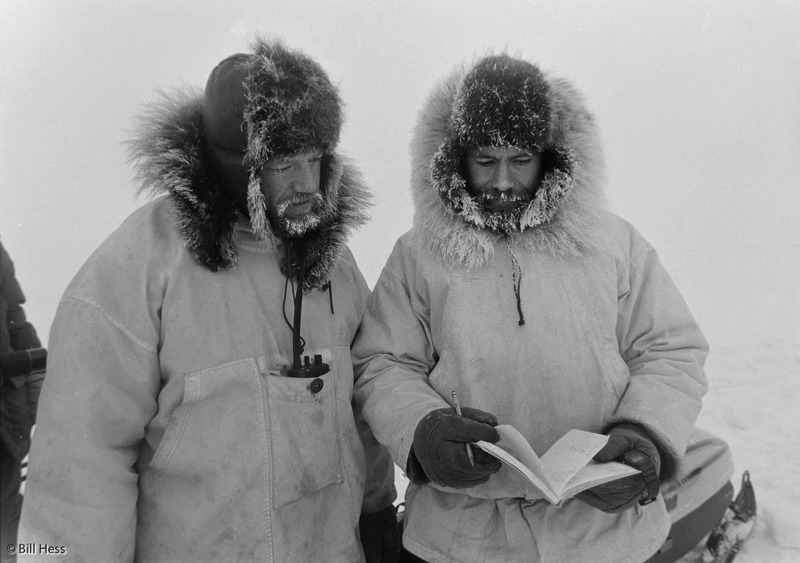
Fortunately, Ferrian and Skluzacek soon met these two - Craig George and Geoff Carroll, who kept detailed field notes on all that they observed with the whales. Among the knowledge they gathered - the whales took 1.6 breaths per minute on average. When Skluzacek and Ferrian told them about their deicers, they were interested.
If there was a chance the deicers would give the whales the opportunity to keep breathing, they wanted to give them a try.
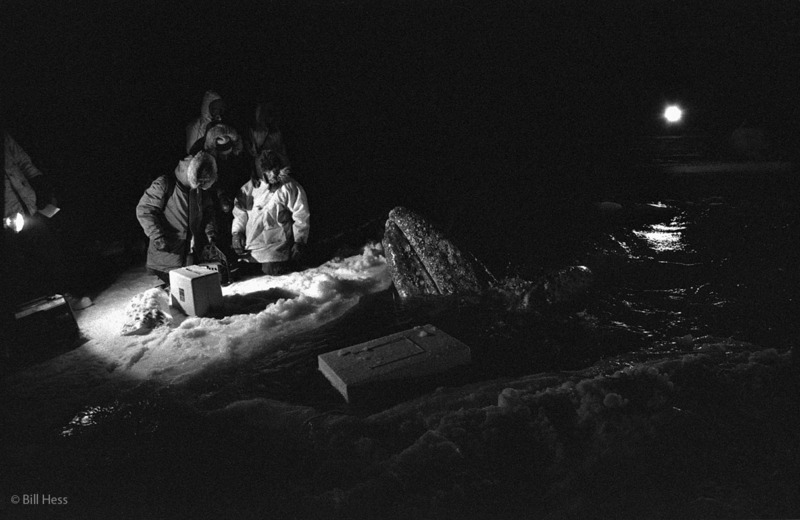
The biogists made arrangements to have Skluzacek and Ferrian helicoptered to the site that night. It had been a tough day at the whale holes. Cold - with a wind that kept a steady drift of snow flying at the surface of the ice. The holes would catch snow from that drift. Once in the water, it would instantly turn to slush, then ice.
Before the Minnesotans could come to the one remaining hole, they had to make some preparations at the SAR hangar. With my friend, UPI reporter Jeff Berliner on the back, I snowmachined ahead of them to the site. Berliner had come to Barrow from Anchorage to cover the rescue and had bunked down with me in the half-quonset hut I rented at NARL - the former Naval Arctic Research Laboratory - three miles north of Barrow.
Above us, the northern lights danced across the sky in green curtains, tinged red and blue. When we arrived at the site ahead of the others, we saw something very curious - a tent, pitched maybe 200 yards away on land, glowing red from the lamp burning inside it.
Curious as to who might be in that tent, we headed towards it, but as we traveled the distance did not close. Puzzled, we stopped. The tent began to change shape, then to rise above the horizon. It was not a tent at all, but the waxing, three-quarter moon.
Such are the optical illusions of the Arctic.
We returned to the whales. It looked exceedingly bad for them. One hole had completely closed. The other had shrunk dramatically and was closing fast. The whales were taking faster, shorter, breaths than before. Bone would sometimes roll onto his side, the way a fish does when it is dying.
The biologists soon arrived, this time accompanied by NSB Senior Scientist Dr. Tom Albert, Ferrian and Skluzacek. Working in the cold, it took a short while to get the generators going, but not long. Soon, electricity flowed into a deicer, attached to a four-foot long styrofoam platform. The deicer propeller began to churn warmer water from below up to the surface.
We watched in amazement as chunks of ice and slush that only moments before had been ready to rob the whales of their breath melted rapidly away. Bonnet then slid through the newly cleared water, right up to the small group of biologists and Minnesotans. To me, it looked the whale understood what had just happened. To me, it looked like the whale had just said, "thank you."
Maybe I am anthropomorphizing and the whale had said no such thing - but that's what it looked liked to me... what it felt like.
One of the more dramatic and fun scenes in the movie Big Miracle is based on this incident. The scene is an exaggeration of what really happened. The real temperature this night was probably close to - 20 F. It was much colder in the movie. For me, it was both oddly fun and strangely funny to see the John Krasinski character get a visual exclusive of the dramatic event as his colleagues feasted back in Barrow in the warmth of Amigos Mexican restaurant. In truth, there was a visual exclusive, captured while I suspect most of my colleagues were feasting at Pepe's North of the Border Mexican Restaurant. Given what the Iñupiat have taught me about not boasting, I feel a little guilty to point this out, but, the picture above is the real visual exclusive of the Minnesotans, the biolgists, and a gray whale at the moment the bubbler went into action.
From this point on, the deicers would be known as "bubblers."
Had the Minnesotans not believed in themselves and their product enough to not be daunted by Morris's rejection but had instead come at their own expense, and had Carroll and Craig not been open to giving the bubblers a try, the rescue may well have ended, right here.
Big problems remained.
p>
Complete series index:
Part 1: Context bowhead hunt
Part 2: Roy finds the whales; Malik
Part 3: Scouting trip
Part 4: NBC on the ice
Part 5: To rescue or euthanize
Part 6: Governor Cowper, ice punch, chainsaw holes
Part 7: Malik provides caribou for dinner
Part 8: CNN learns home is sacred place
Part 9: World's largest jet; Screw Tractor
Part 10: Think like a whale
Part 11: Portrait: Billy Adams and Malik
Part 12: Onboard Soviet icebreakers
Part 13: Malik walks with whales, says goodbye
Part 14: Rescue concludes
Part 15: Epilogue
 Sunday, February 12, 2012 at 12:16AM
Sunday, February 12, 2012 at 12:16AM 

